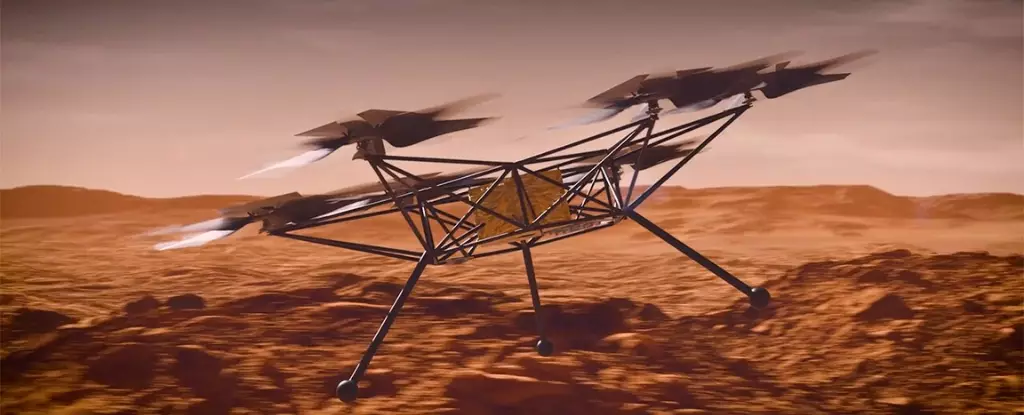In April 2021, a remarkable milestone in space exploration occurred when NASA’s Ingenuity helicopter deftly hovered above the Martian surface, making history as the first powered aircraft to achieve flight on another planet. This groundbreaking event not only validated the concept of aerial flight in the bleak and thin atmosphere of Mars but also demonstrated the potential of rotorcraft to enhance the exploration of extraterrestrial landscapes. As a technological demonstration carried to Mars aboard the Perseverance rover in 2020, Ingenuity was initially intended to undertake a limited number of test flights. However, it far exceeded expectations, completing over 60 flights and gathering valuable data about Martian terrain, thereby transforming our understanding of the Red Planet.
Operating a drone on Mars comes with a complex set of challenges, primarily due to the planet’s markedly lower atmospheric density, which is less than 1% that of Earth’s atmosphere. In such an environment, aerial vehicles like Ingenuity must work significantly harder to generate sufficient lift. The design of rotor blades becomes critical; they must be finely tuned to take advantage of the scarce air molecules. Additionally, the Martian surface is characterized by fine dust particles that can be easily disturbed by wind and the rotor blades, posing risks of damage to the craft’s intricate mechanisms. Thus, any future aerial vehicles must not only possess the capability to navigate the thin atmosphere but also be engineered to withstand local environmental hazards.
Building upon the triumphs of Ingenuity, NASA has unveiled a new design concept known as the Mars Chopper. This next-generation drone reflects significant advancements in technology and aims to expand the capabilities of Martian exploration. Visualized as a vehicle comparable in size to an SUV, the Mars Chopper boasts six rotors, each with numerically smaller blades than those found on its predecessor, enabling the craft to achieve greater lift overall. With a designed payload capacity of up to 5 kilograms, this craft is engineered to carry scientific instruments including imaging and analytical tools. Such capabilities will allow the Mars Chopper to conduct reconnaissance missions, which are essential for mapping terrains and scouting locations for future exploration endeavors.
The innovative design of the Mars Chopper results from collaboration between NASA’s Jet Propulsion Laboratory in Southern California and the Ames Research Center. The collaboration signifies not only the pooling of expertise and resources but also the commitment to advancing technology in the realm of space exploration. This new aerial vehicle’s enhanced payload capacity allows it to undertake multifaceted roles in planetary exploration, ranging from scientific data collection to supporting human missions by reaching areas that are generally inaccessible by rovers.
The introduction of the Mars Chopper heralds a new chapter in our quest to understand Mars and potentially other celestial bodies with solid surfaces and atmospheres suitable for flight. The capabilities of such drones could dramatically reshape how scientists approach planetary exploration. The aerial reconnaissance provided by the Mars Chopper would add immense value to ground-based exploration. Enabling the collection of geological samples, mapping of Martian environments, and identifying sites for potential human habitation, these aerial vehicles represent a revolutionary tool in the arsenal of planetary scientists.
While the immediate focus is on Mars, the design and success of the Mars Chopper have broader implications. The engineering principles and findings could pave the way for aerial exploration on other worlds, expanding our ability to study alien environments. As we continue to push the boundaries of our celestial knowledge, the advancements in drone technology exemplified by the Mars Chopper could serve as precursors to a future where exploring distant planets becomes increasingly efficient and sophisticated.
The Mars Chopper embodies the spirit of innovation and serves as a reminder of the exciting possibilities that lie ahead in the exploration of Mars and beyond. As we move forward in our quest for knowledge, aerial exploration will likely play an integral role in expanding our understanding of the universe.


Leave a Reply